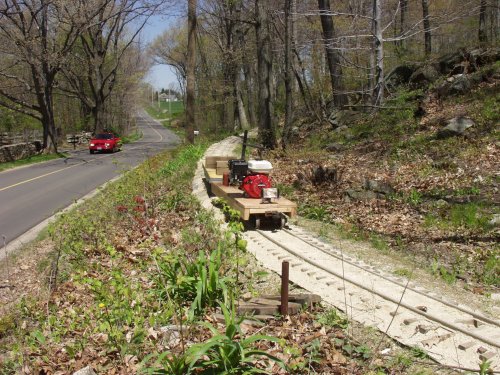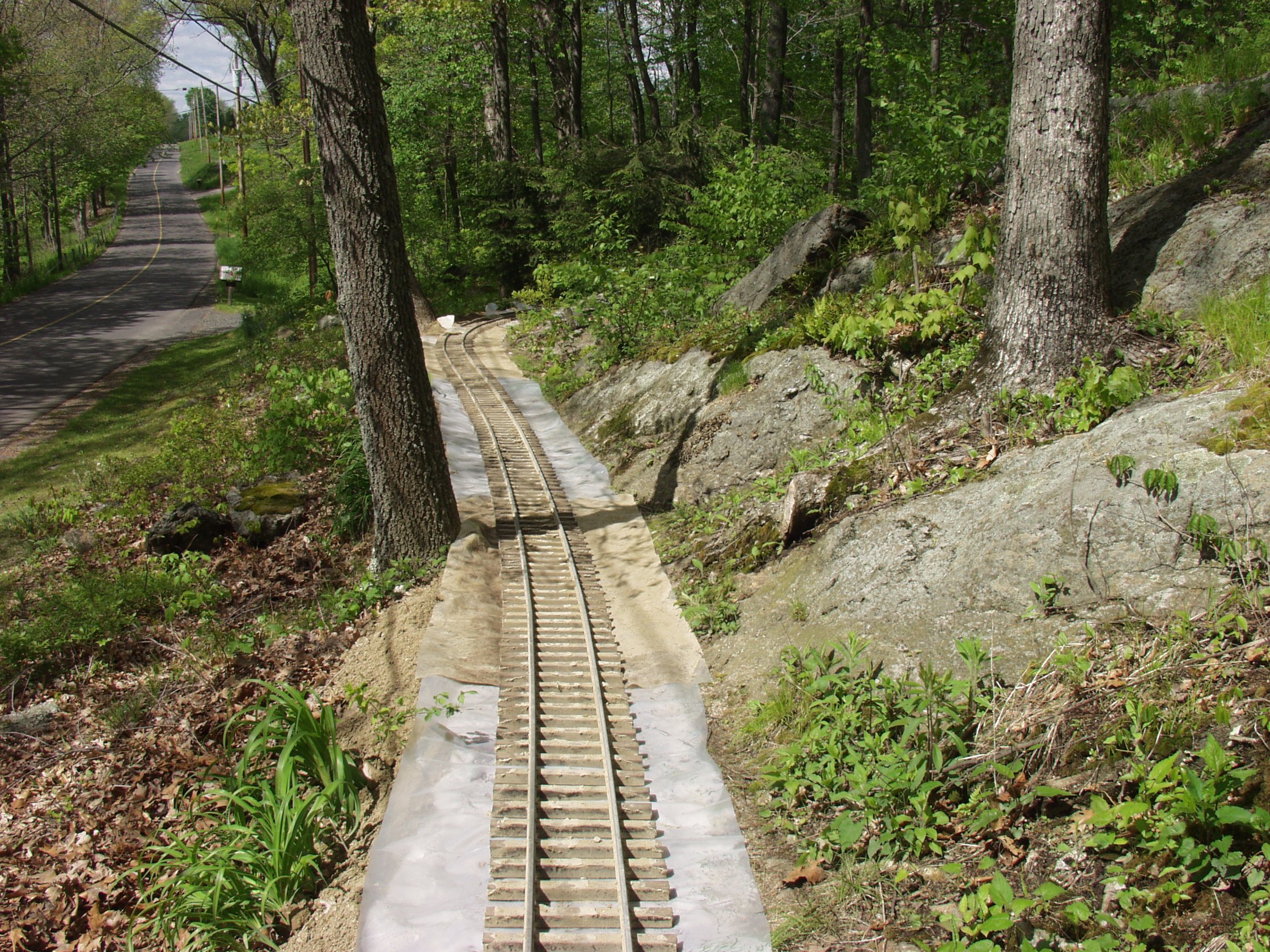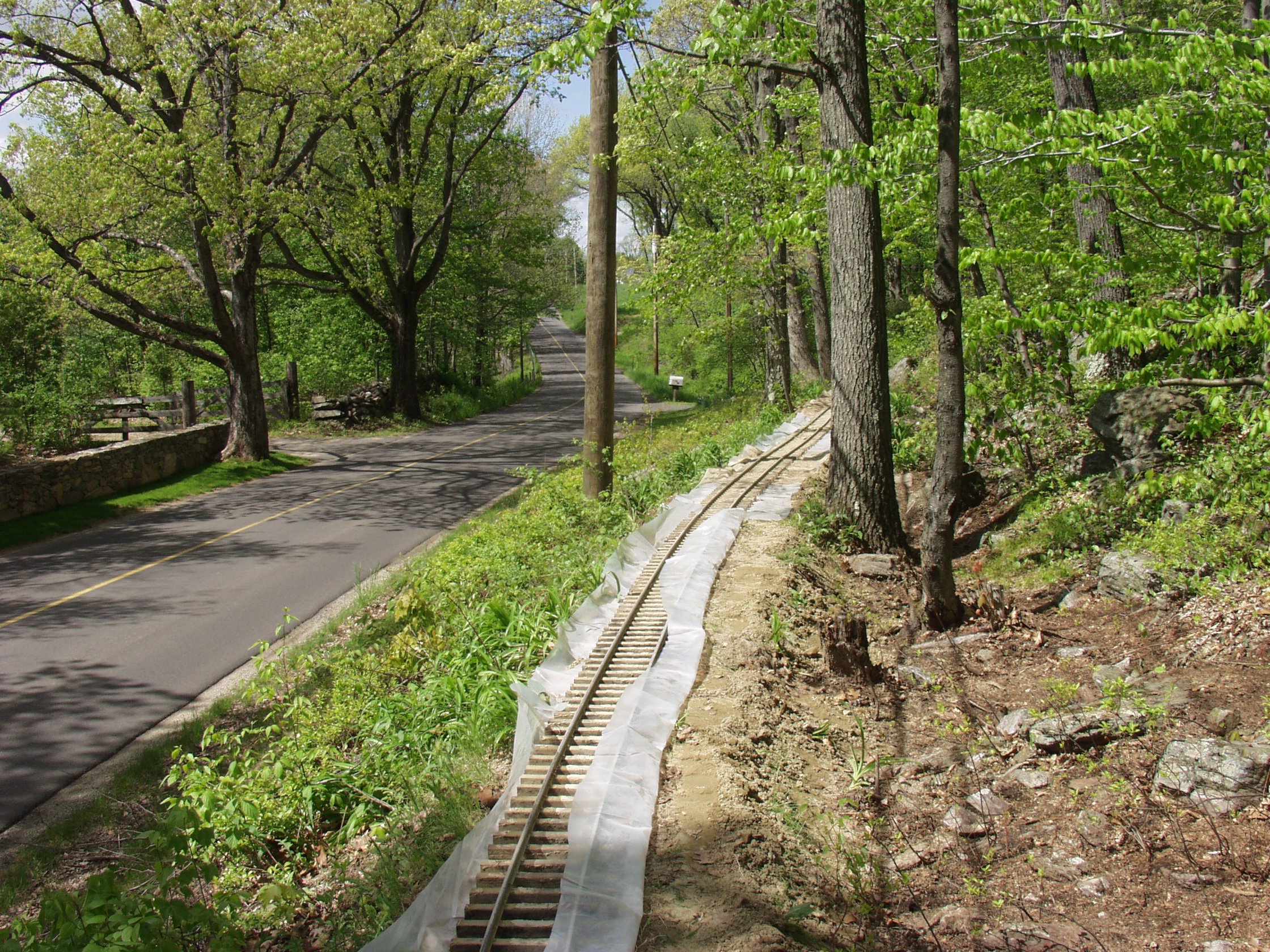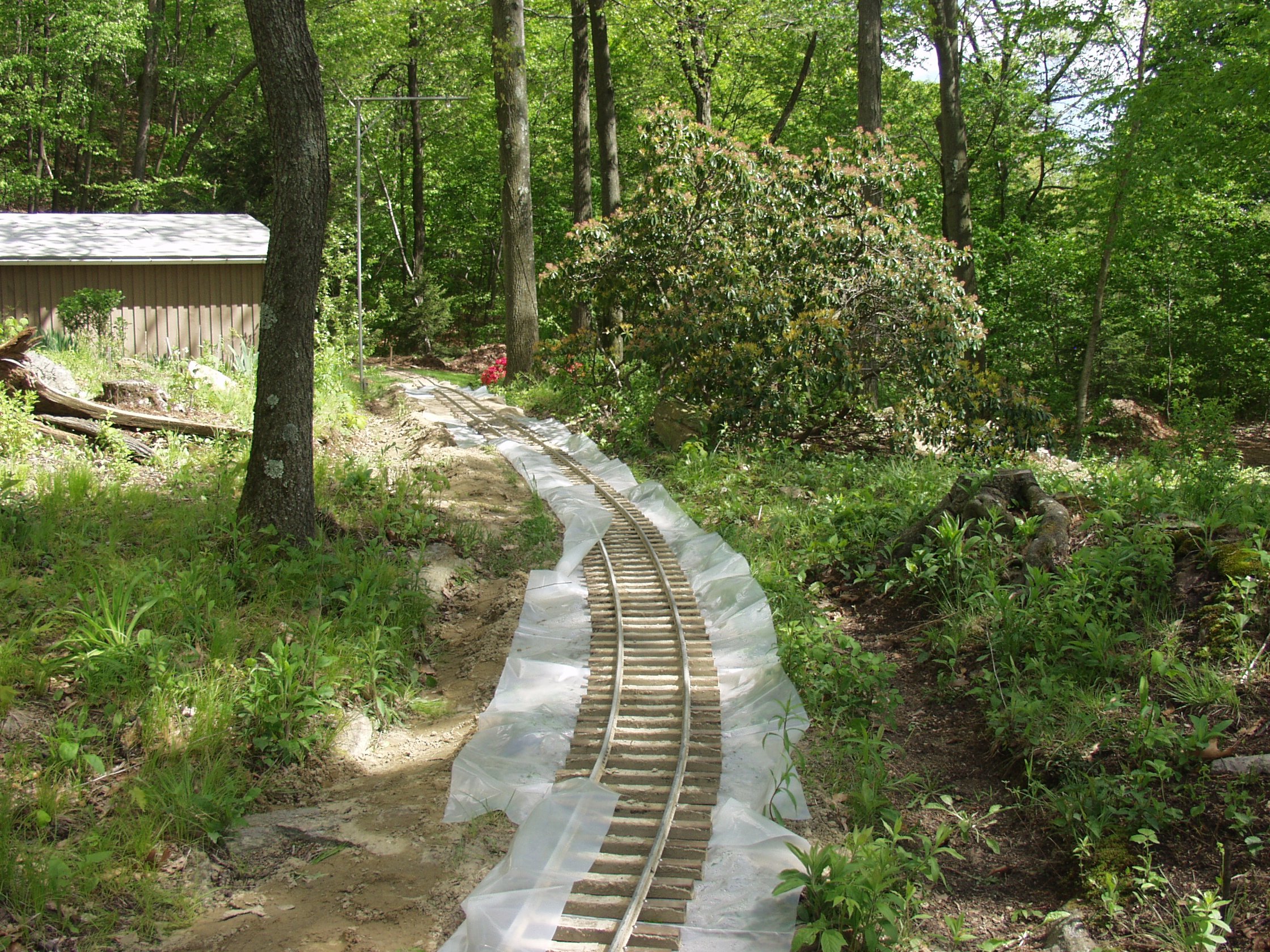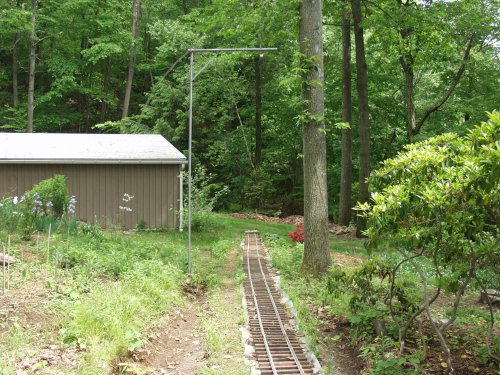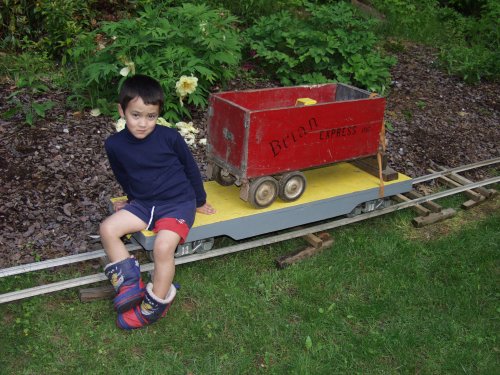|
Introduction: This page will be used to show photographs and to discuss the construction of the 7 1/2" gauge model railway in Roxbury. The name, Roxbury Mining & Exploration, is a spoof. My first job overseas was as a steam locomotive fireman at Vaal Reefs Mining & Exploration Company, Vaal Reefs, South Africa during the mid 1980's. Vaal Reefs is the largest underground gold mining operation in the world, and it is part of Anglo American. The 19D type 4-8-2 steam locos were on hire from the South African Railway, now called Spoornet. The mine dieselised some time around 1992. The RM&E started off as a 4 3/4" gauge model railway with one working steam locomotive (4-4-0 wheel arrangement) and grew into a dual gauge model railway, 4 3/4" and 7 1/2". The in late 1988, the railway was electrified and the running of a 7 1/2" gauge electric lok was common place. This version of the RM&E, electrified and having high earthwork fills to avoid any steep grades, was short lived. In the Summer of 1989 a very necessary water hydraulic scheme required that the majority of the model railway be removed. Gone went the rails and the water scheme took the majority of the high railway embankments for fill. By late Autumn of 1989 the only structural item remaining of the old RM&E was a single overhead catenary pole. The pole remained in place as a reminder of the days of a more interesting backyard. During the Spring of 1999 the idea of re-building the RM&E was discussed and that Summer rail and cross ties (sleepers) started to make an appearance and the old abandoned sections of the surviving roadbed were cleared. The large fills were not reconstructed and as a result the new RM&E has severe grades on both the north and the south locations. During late August of 2000 the 7 1/2" gauge track work (rail and ties) had been completely re-laid and during the year 2001 the track was ballasted. During the early Spring of 2002 the surviving hardware of the old test bed was utilized and a new petrol powered test bed was constructed. The original thought was to make the test bed DC battery powered, but this concept has not been forgotten as the putt-putt sound of the petrol engine gets a wee bit annoying after a few hours of operation.
Due to the severe gradients, the use of the 4 3/4" gauge steam locomotive has been ruled out as maintaining water over the boiler crown sheet would be difficult. Also, from past experience, the steam locomotive does not have sufficient tractive effort due to the low axle loading to climb the existing grades. However, the installation on the east side of the RM&E of the 3rd rail for operating the steam locomotive may occur in the Summer of 2003. This would provide as low gradient location for the steam loco to be exercised and checked over. Eventually I will break this web page into categories of images, track, etc. For the moment, the page is set up with the most recent entries on the top of the page.
2002-Dec-20 The model railway has gone through a few changes. The sand ballast turned out to be a complete disaster. The rigid bogies of both the flat wagon and the loco (test bed) would easily derail at the slightest rail dip. Therefore, the Spring and Summer of 2002 witnessed a one man track surfacing activity which installed both rock dust (a form of crushed stone for patio and sidewalk sub-grade preparation) and 1/4" crushed stone in place of the sand. The two choices of ballast, rock dust and 1/4" crushed stone, were chosen and installed in different track locations to provide some form of feedback regarding the suitability of each for future model track construction. The rock dust settled in quickly which reduced the amount of ballast tamping time required to make the track structure stable. However, the rock dust has a tendency to flow away during very heavy rain storms. The 1/4" crushed stone, albeit more time consuming regarding tamping, has clearly performed better than the rock dust with respect to holding the desired shape and place in the track work. Another change was the replacement of the thin metal rail splice bars (fish plates), used with the Miller rail, with 3/16" thick 304 grade stainless steel splice bars in select sections of curved track. The reason for this modification was due to the kinking of the rail joints as the thin metal splice bars were slowly bending from the thermally driven in rail compressive forces. The heating of the aluminium model rails by the sunlight causes the rail to expand longitudinally and close up the gaps provided at the rail joints for just this reason. However, upon cooling at night, the rail sometimes does not contract back to the original location but instead creeps toward a specific direction. The result is large joint gaps at some locations and no gaps at others. Then when the sunlight returns the tight (no gap situation) rail joints experience high compressive forces that tend to kick the rail outward in the tight curves. Therefore, the model railway joints must not be overly tight so as to allow for the free thermal expansion movement of the rails and the joints bars must be rigid enough to not bend during periods of high compressive rail forces. To date the 3/16" 304 joint bars have proven to function well. Loctite was used to secure the fasteners in place as the nuts are not turned down hard onto the socket-head cap screws. Snow removal is being performed manually. No snow plows have been manufactured and installed onto the test bed. The combination of the aluminium rail and the steep gradients have made winter operations rather interesting. Dry snow is not a problem, wet snow is a show stopper. Beach sand or coal ash, depending which material is not frozen solid that day, is manually applied onto the rails to allow the test bed to pull itself around the loop. After a few go-arounds, the track is sufficiently gritty enough and the test bed and the flat wagon go around the loop without any further attention for hours. The petrol tank capacity usually sets the length of the running time. When the train no longer runs past the house, I simply go out an find the lot and push it back to the storage location.
Here are a few images taken during Spring of 2002.
The test bed pulling the flat wagon along the section of track that parallels Painter Ridge Road.
Sand ballast is removed, new plastic sheeting installed. Awaiting stone dust. 2002-May-19
Sand ballast is removed, new plastic sheeting installed. Awaiting stone dust. Wind is kicking up the plastic sheeting. 2002-May-19
Sand ballast is removed, new plastic sheeting installed. Awaiting stone dust. In this image the reason for the plastic sheeting is made evident. It is a weed and grass barrier. 2002-May-19
2001-Dec-24 The railway line rails and ties have all been completed. I used washed sand, not the usual crushed stone, for the ballast. Sand was chosen as the lawn mower and crushed stone do not get along for obvious reasons. The drawback with using sand is the time required for the railway roadbed to settle. The use of sand for a miniature railway is satisfactory as the maximum expected axle load is 500 lbs. The line now includes one stub end siding to allow the work car (flat wagon) to be pushed out of the way. Winter is here, and all track work is on hold. For now the lone work car is manually pushed around the railway. Snow clearing is also performed by hand. No plow or flanger mounted to the flat wagon.
2001-June-03 Motive Power for the model railway will be at first a DC powered railcar, nothing great, just a working test bed for future electric traction applications. The re-introduction of the 4 3/4" gage steam loco will occur much later as I must go back and install the 3rd rail for this gage. Re-introduction of the overhead power supply for an AC loco is still being pondered especially since the original AC test bed was taken out of service in August 1989. The last remaining AC overhead support catenary pole from the 1989 test bed, is visible in the below photograph, complete with insulator.
Year 2001 track laying on the RM&E. I have two rail types:
This is my son, Neil, with my old van trailer secured onto the work car (flat wagon). |
|
|
